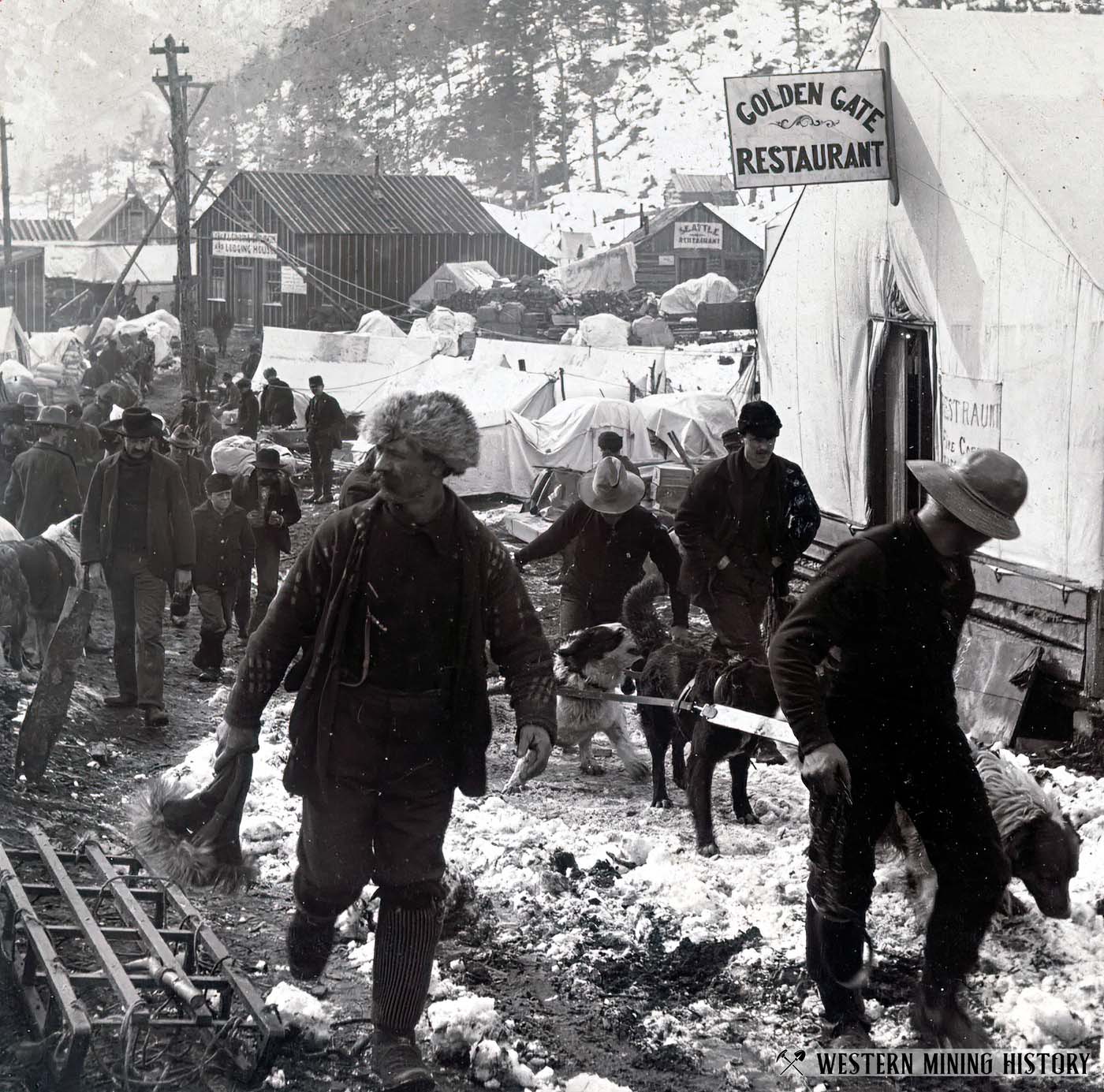Sheep Camp History
The following text is summarized from a report by the National Park Service.
Sheep Camp has long been a stopping place for travelers crossing over Chilkoot Pass. It was the last convenient camping area on the trail before timberline. It has probably been used for hundreds of years by Alaska Natives crossing to and from the Interior.
The trail was used by many of the prospectors who headed north for gold between 1880 and 1896. For most, the passage was uneventful. However, in the spring of 1895, customs officers visited the camp and enlivened things by destroying three kegs and ten cases of liquor.
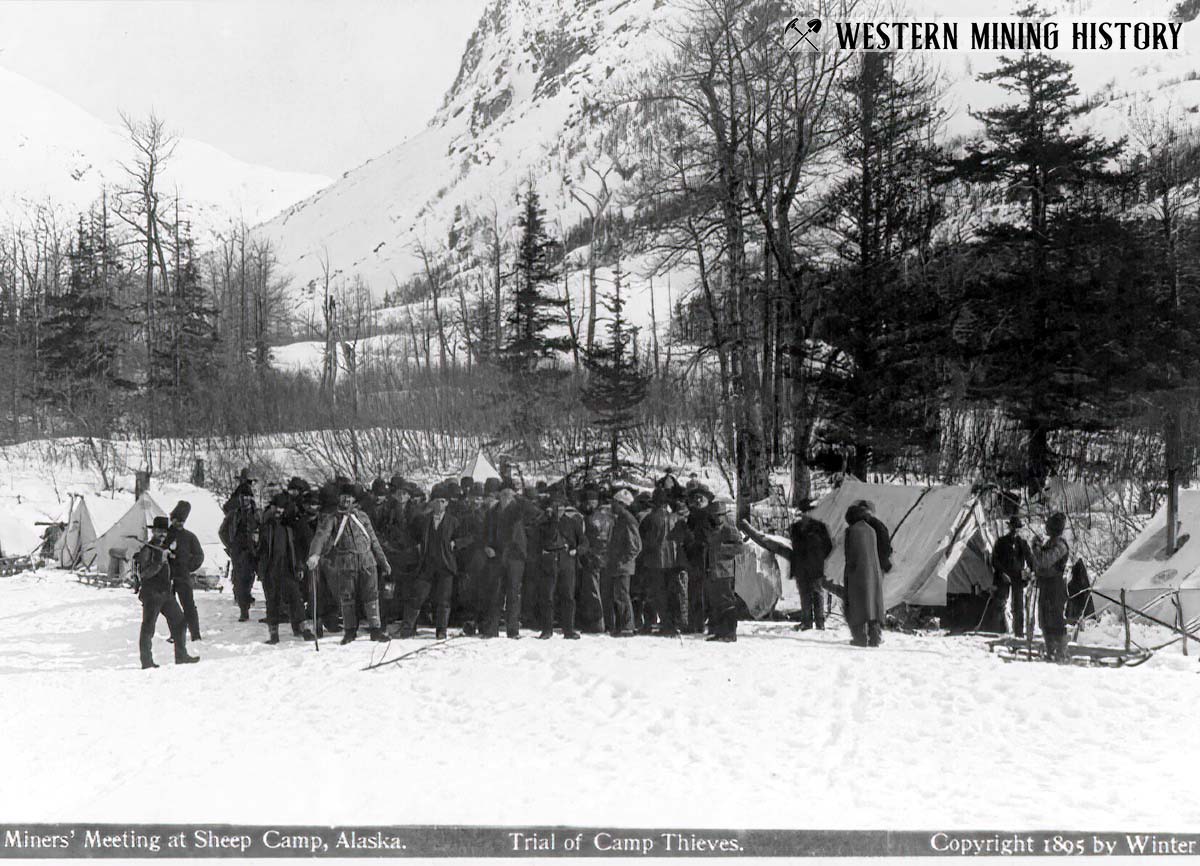
Several stories have tried to explain the camp’s name. It probably came about because it was thought that sheep (actually mountain goat) hunters camped here. A less likely story is that a prospector drove a band of sheep over the pass, and camped here along the way. Other stories claim that the place was named “because of the number of mountain sheep formerly killed there,” or from “the mountain sheep which at one time were plentiful.”
Gold Rush Camp
The Klondike Gold Rush, which started in 1896, would dramatically increase the number of people traveling the Chilkoot Trail. In the summer of 1897 the first wooden structure was built at Sheep Camp. Early photographs show a combination hotel and store existed on the east side of the river. A man named Palmer ran it. Alfred Daly, who traveled north in mid-September 1897, described it:
…a shanty where they had a floor. It was a kind of a hotel. You paid for the privilege of sleeping on the floor. The proprietor told us that if we didn’t get our blankets down on the floor very quickly, we couldn’t get room. He was right. The floor was full very soon.
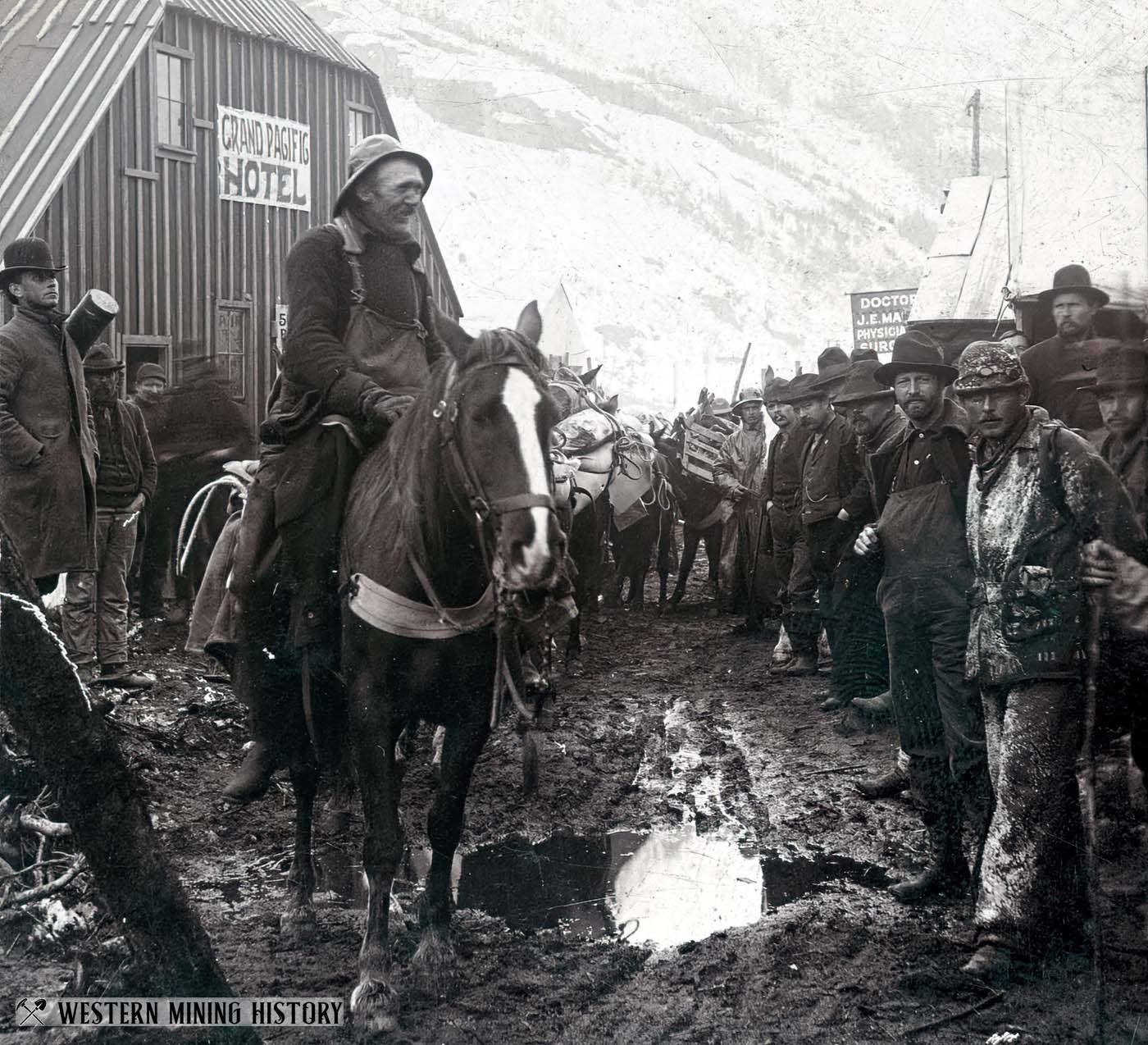
The B. S. Foss supply store was built west of the main river crossing. Foss, a Swede, was known as a “pioneer merchant of Sheep Camp.” By September, newspapers were reporting on the growth of the camp. One listed two restaurants, two well-stocked stores, and three saloons. Sheep Camp numbered 250 persons by mid September.
On September 18, 1897 a wall of water swept through the camp. This inundated the large assemblage of tents on the west side of the river south of the crossing. One source claimed that the “tower of water” was nearly forty feet high. Others have suggested a height of five feet or less. All of the camp’s residents survived the debacle, but hundreds of outfits were buried or swept downriver by the rampaging floodwater. The small community quickly recovered.
With the freezing of the Interior rivers growth in the camp slowed. The camp did not change noticeably during October 1897. At late as January 1898 there were still a relative handful of wooden buildings to complement the “couple of hundred tents straggled along the floor of the gorge.”
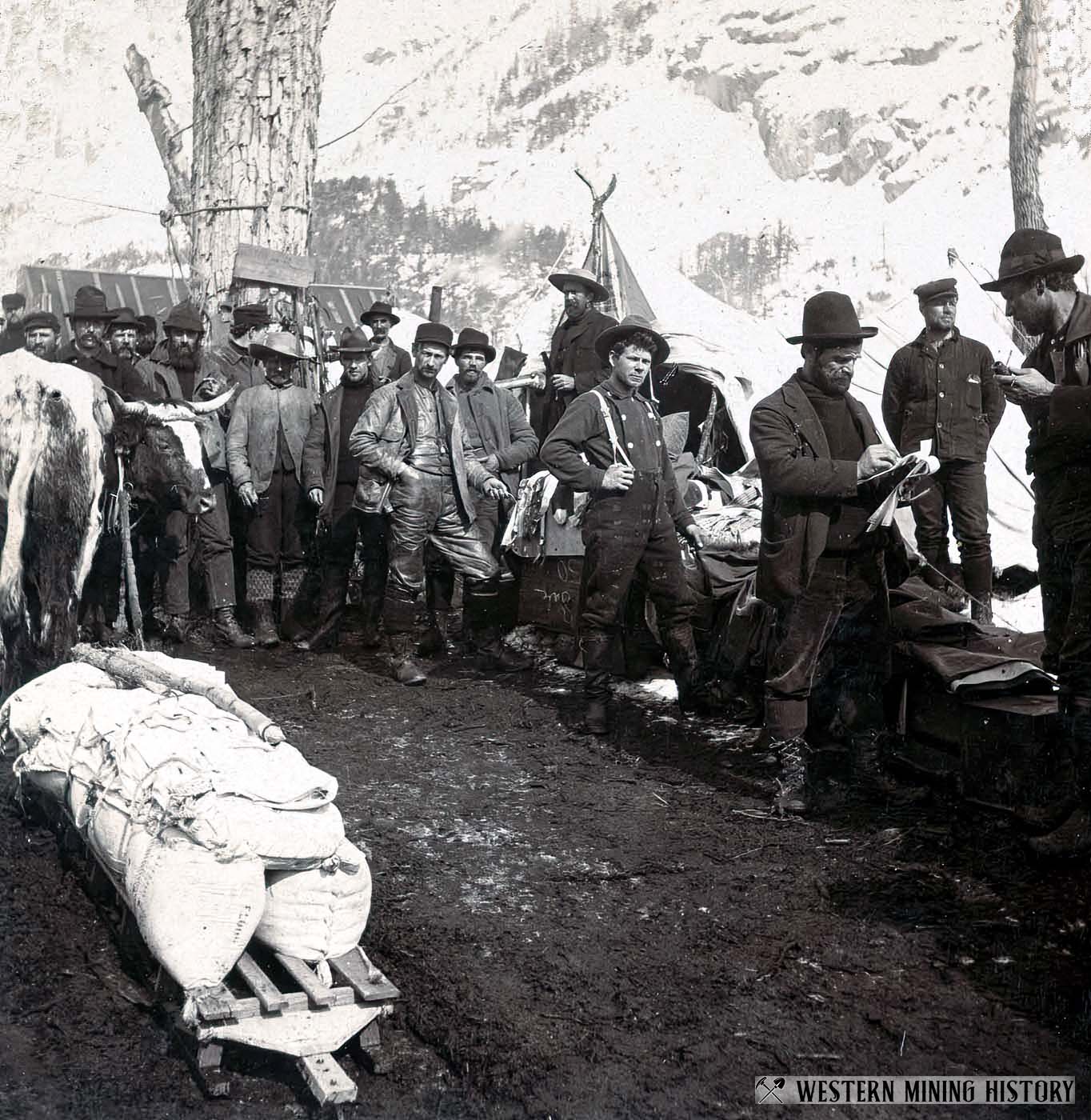
By the standards of the time and circumstances, Sheep Camp was relatively businesslike, even prudish. One diarist remarked that it was a quiet community; there was a notable lack of dance halls, “gambling joints,” and prostitution.
Gold Rush Boomtown
The Klondike Gold Rush peaked in 1898 and Sheep Camp became a boomtown. By mid February approximately forty log buildings had been erected, and by the end of the month the population had risen to between 350 and 400. By early April a formal post office had been established. The need for mail service had been obvious for months before that time, and in place of an official system, several informal post offices had been established in local stores.
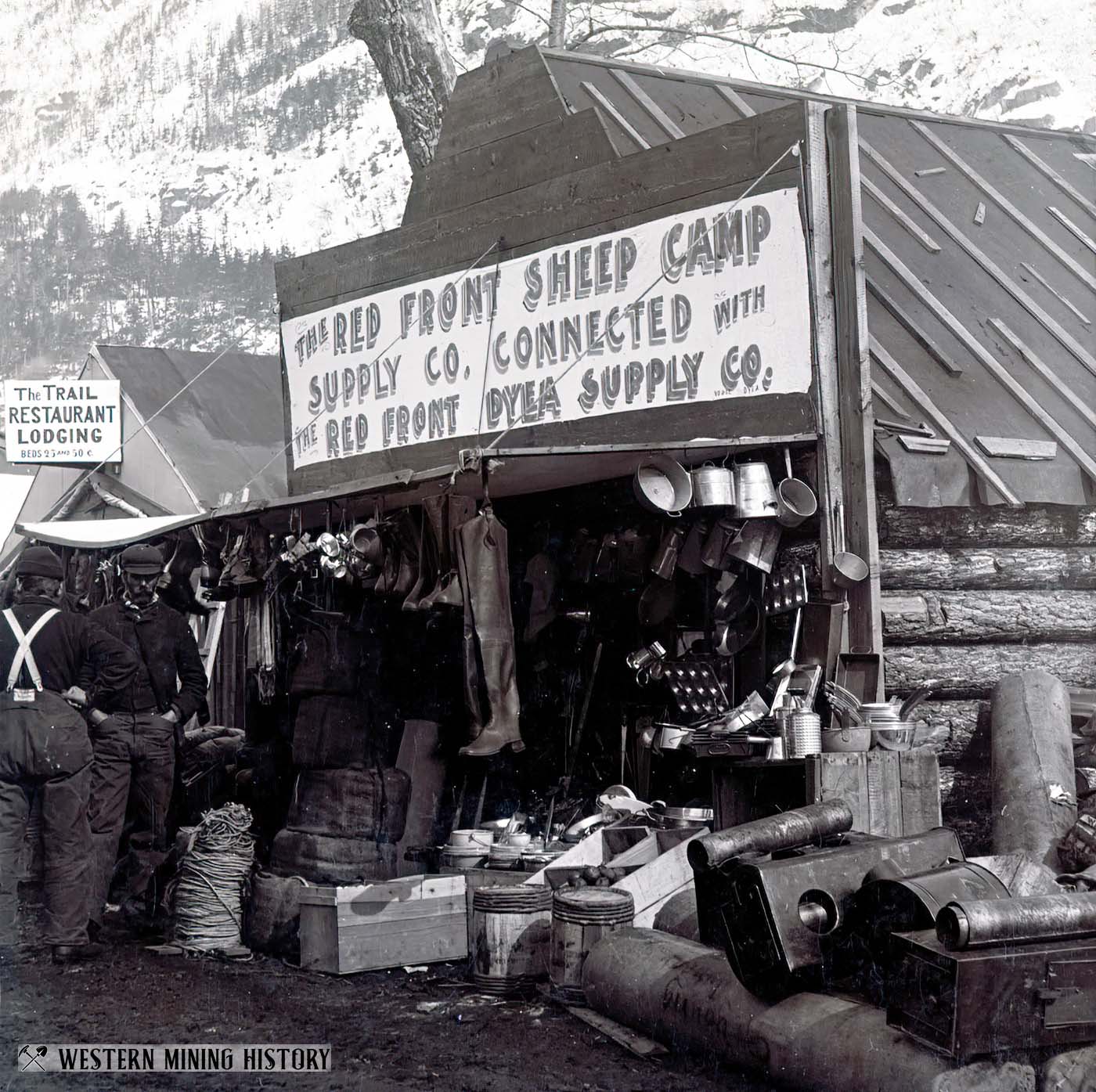
By April, Sheep Camp was booming. A Dyea newspaper reported that there was "scarcely an inch" of available ground in the area in which to camp, with "tents so thickly set as to prevent one passing between them in any instance." The main street was reportedly sixteen feet wide. Tents and buildings stretched across the narrow valley, and estimates of the town's length varied from one to two miles.
A newspaper reported that within the camp there existed "two drug stores, a hospital, fifteen hotels and restaurants, coffee stands and lodging houses too numerous to mention." It also had "two laundries, a bath house and several store houses, numerous small stores and many saloons."
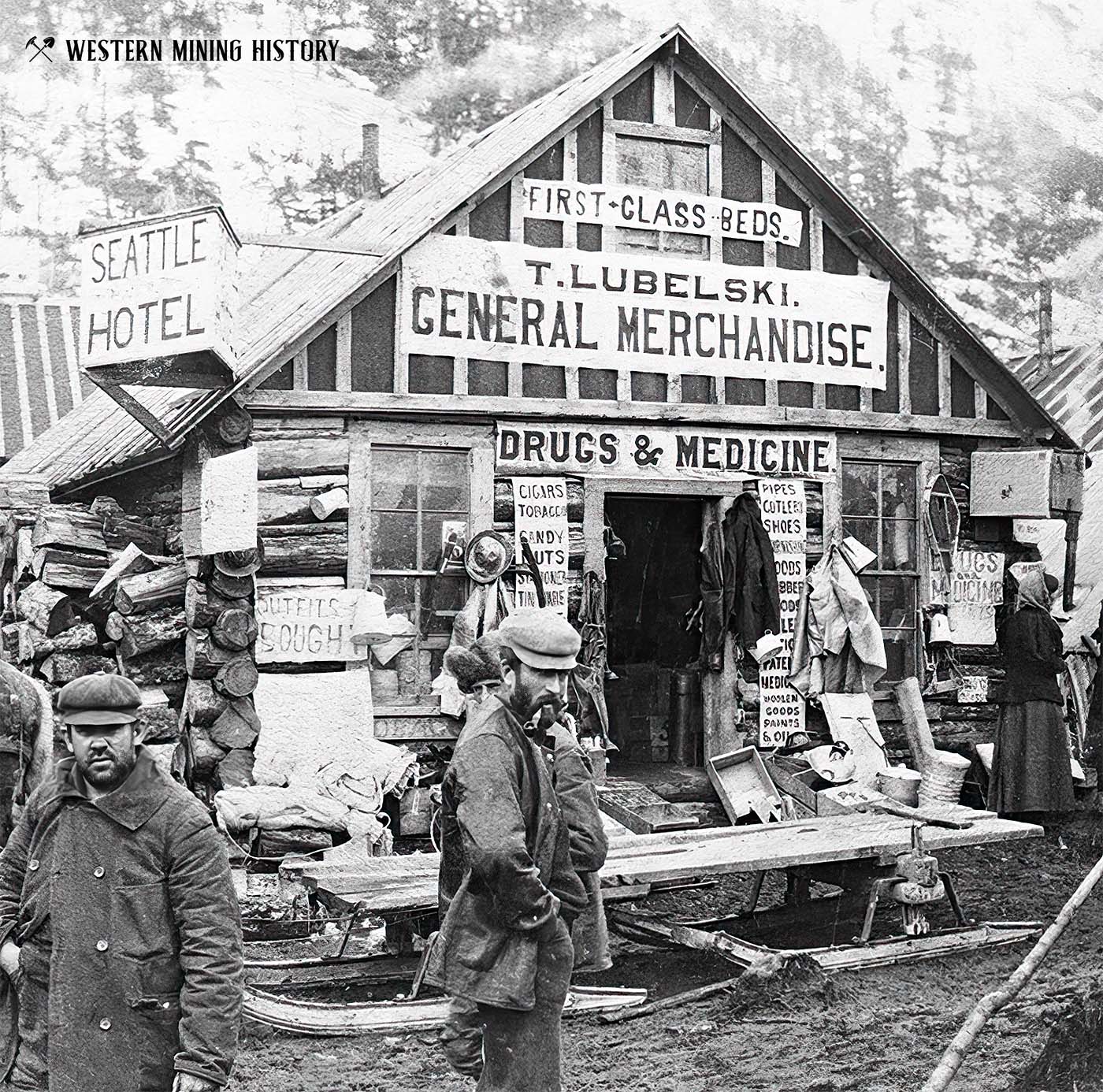
The camp's veneer of lawful behavior was apparently short lived. Incidences of stealing had aroused miners' meetings even before the gold rush. Theft was again noted in early February and late April 1898. One of these resulted in a well-publicized whipping. The murder of a leading resident in mid-May underscored the fear that had developed of the camp's lawless element. Sgt. Sam Steele of Canada's Northwest Mounted Police passed through Sheep Camp in late February 1898; he remarked:
neither law nor order prevailed, and honest persons had no protection from the gangs of rascals who plied their nefarious trade. Might was right; murder, robbery and petty thefts were common occurrences.
Sheep Camp residents made only the merest attempts at government. A plat map was drawn, but it has since been lost. Most persons did not bother to record their lots, and few of those that did referred to the existing plat. Regarding the public protection, a fairly long lasting citizens' committee was organized against the lawless element noted above. It also assisted in the identification and burial of the victims of the Palm Sunday avalanche in April 1898.
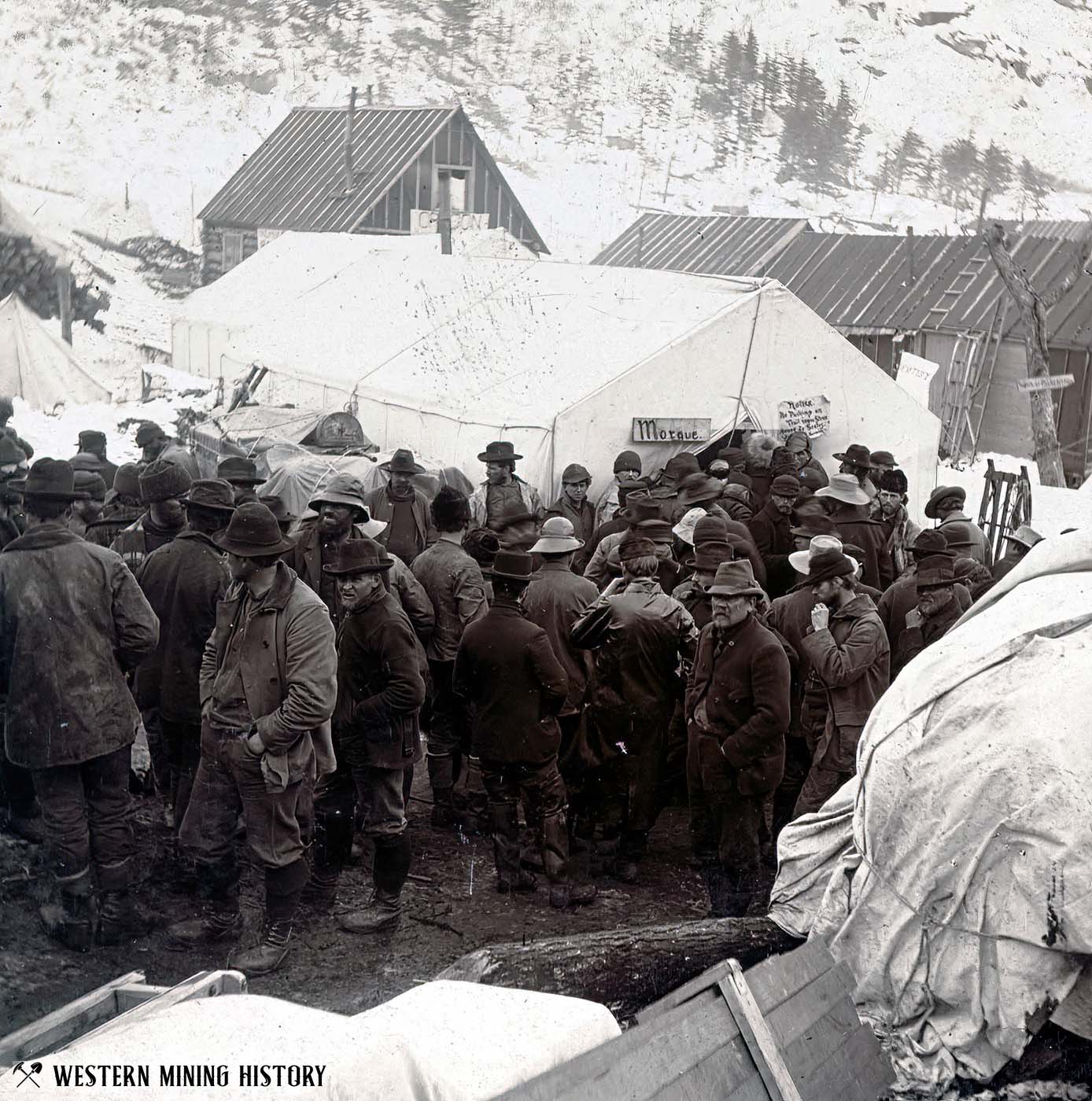
In the first few months of 1898, a line, used for telephone purposes, was constructed by the CR&T tramway company. It paralleled the CR&T tramway line, traveling just east of the line, through the entire townsite. This company's distinctive two crossbar poles are seen in many historical photographs. This line was completed in February 1898; Sgt. Steele used it to call Dyea from the Scales on February 23.
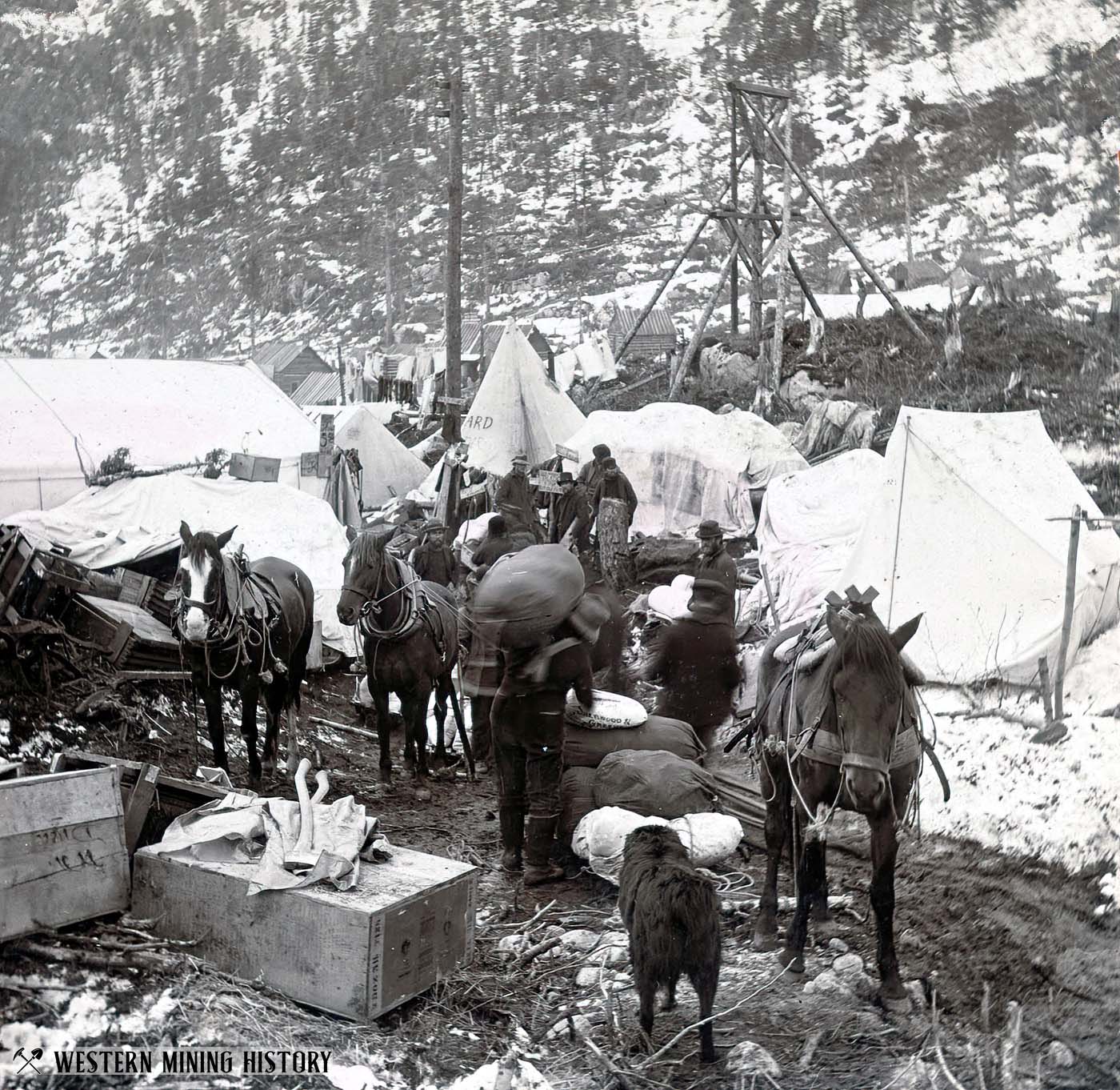
The population of Sheep Camp, like the other Chilkoot Trail camps, rose during the fall and winter of 1897-98 and fell thereafter. It was probably at its height between February and April 1898.
Estimates of its peak population ran between six and eight thousand. John P. Clum estimated that it averaged seven thousand for two months. Another source has quoted that there were "seldom fewer than fifteen hundred people" there during the gold rush. Despite the bustle and activity, all knew it was temporary. One stampeder wrote in his diary that "no one expects it [Sheep Camp] to last longer than this spring."
During its peak, the camp supported 16 hotels or lodging houses, 14 restaurants, 13 stores or supply houses, 5 doctors or drug merchants, 3 transportation companies, 2 dance halls, 2 laundries, and of course numerous saloons.
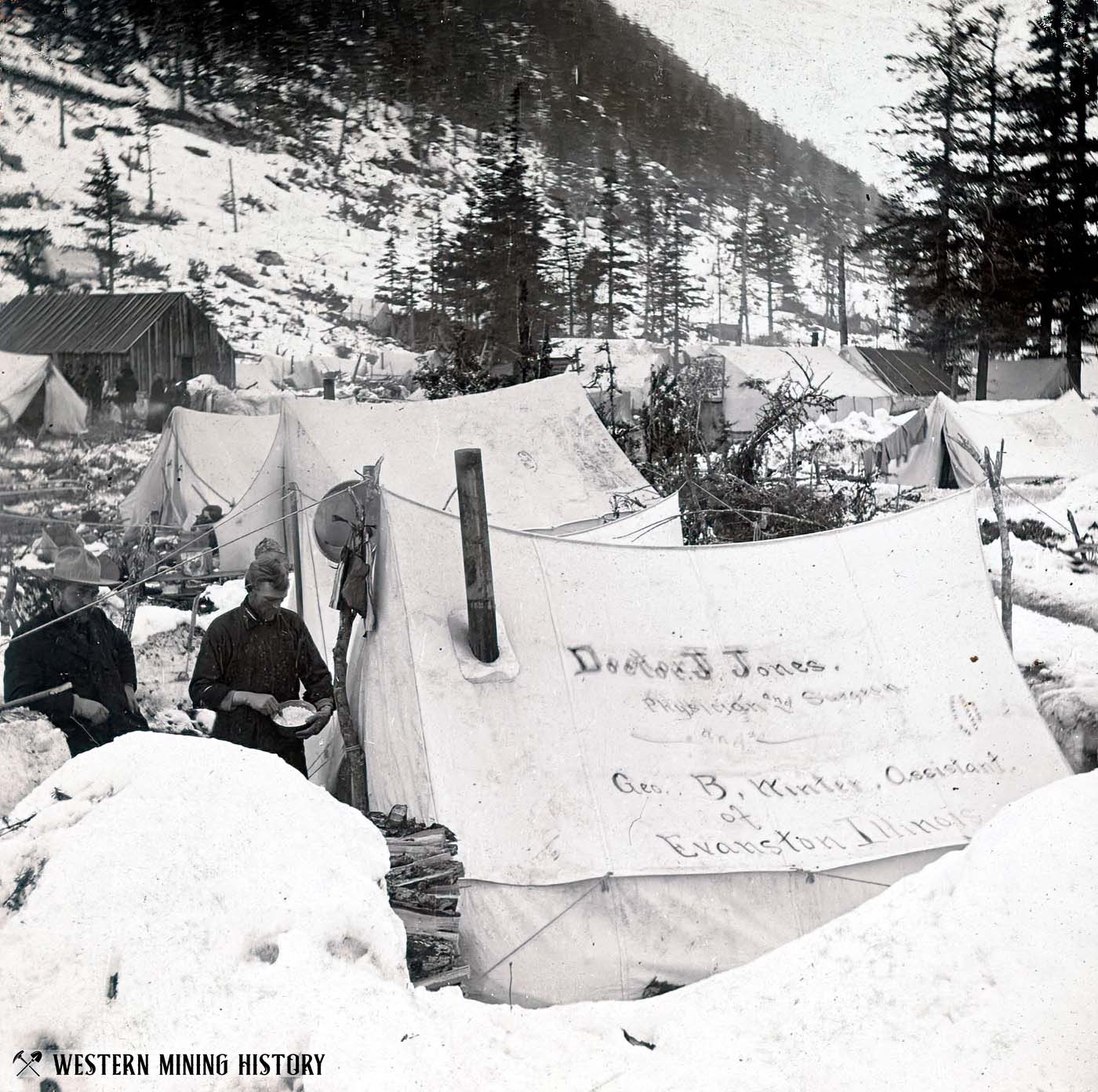
The condition of these buildings varied greatly. The hotels, as a rule, were usually wood frame buildings. They were often two stories high; with the possible exception of the dance halls, they were the only buildings in town known to exceed one story in height. Diaries show that the hotels were simple at best. Most patrons were simply offered large rooms where a communal floor was shared. Most hotels were of board and batten construction.
Most of the other businesses were located either in log buildings or in canvas tents. A few were open-air operations. Some of the hotels and a few of the other businesses advertised on large wooden signs. Others announced their wares on pieces of canvas, on the side of their tents, or on small boards.
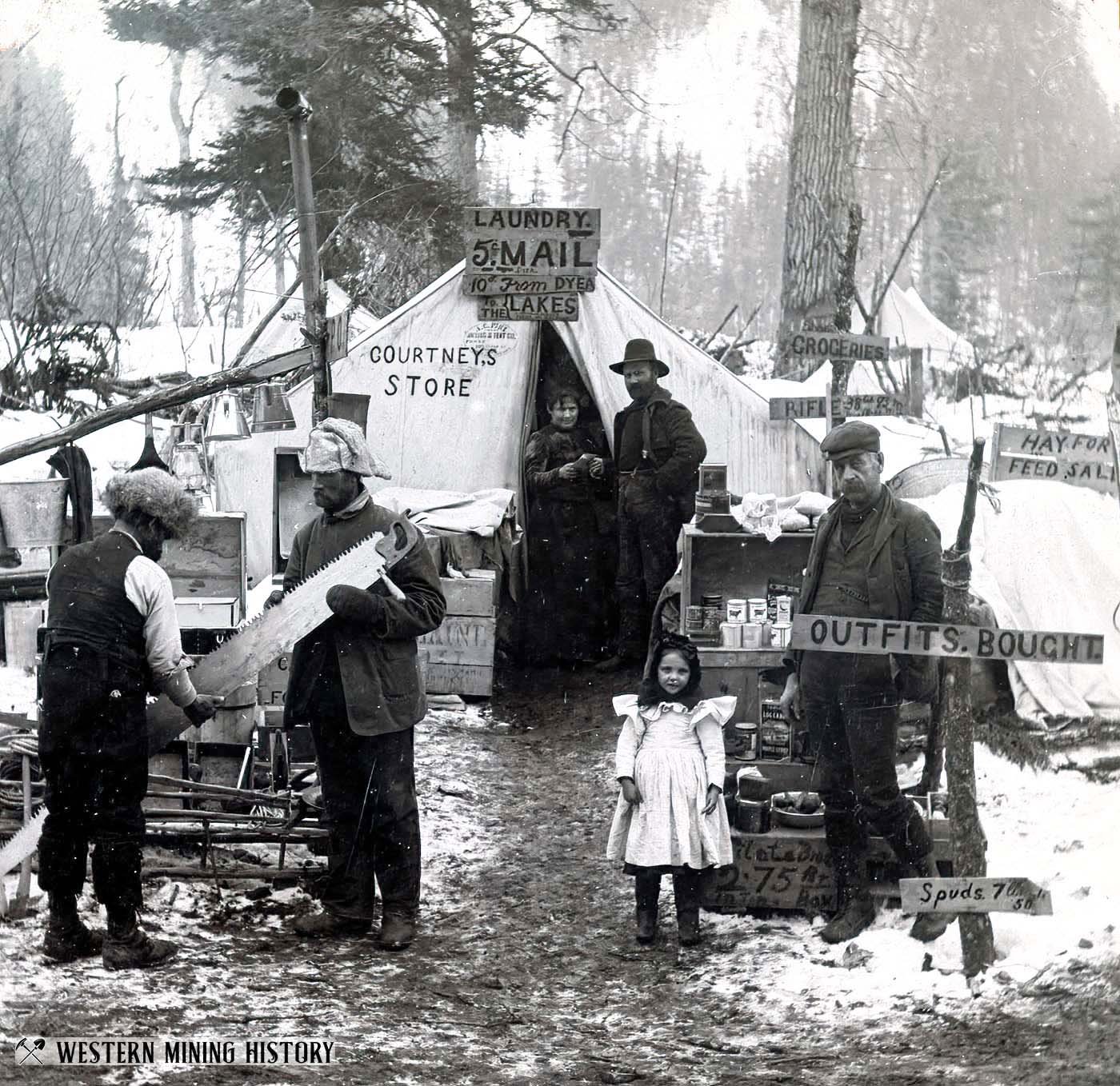
Post Gold Rush Decline
With the coming of summer, the flood of stampeders predictably slowed to a trickle. The coming winter did not bring a renewed wave of stampeders, and by July 1899, only 18 people remained in the town. The last shred of an economic base at Sheep Camp was removed when the CR&T Company tramway system shut down that summer. The post office closed on October 21, 1899. The town was probably vacated soon afterwards.
The remains of the abandoned town decayed slowly. In September 1906, when the Leland Boundary Survey passed through, most of the buildings were still standing. In 1924 longtime Skagway resident George Rapuzzi visited the area. As he remembered it, “there was lots of Sheep Camp intact then, it was as good as before.”
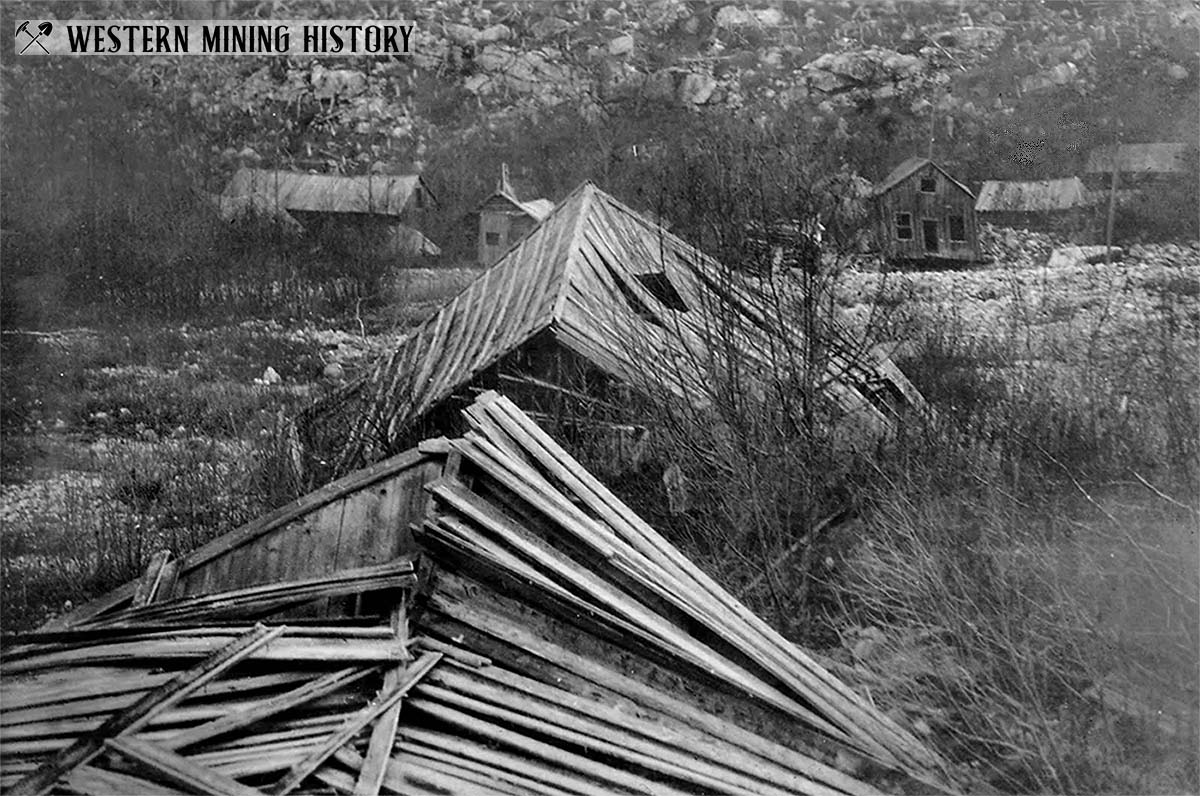
At the time a Hollywood director was planning a movie on the gold rush, and he envisioned restoring Sheep Camp to its former appearance. He also planned to build a road up to the camp. The director hiked up to Sheep Camp with a small crew, and reportedly took “a huge amount” of movie footage of the area before returning south. For an unknown reason, the movie was never made with Sheep Camp as a location, and plans for the road were dropped.
In subsequent decades, souvenir collectors and flooding destroyed most of what remained at this historic gold rush town. Today Sheep Camp is an important stop along the Chilkoot Trail. This is the last campground before hikers head up Long Hill to the Scales, and then over Chilkoot Pass. As a result, the Sheep Camp campground is often one of the fullest and most bustling stopping places along the trail in the summer.
